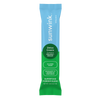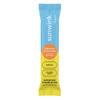Wellness Plan 101: How To Create Your Personal Wellness Plan

Whether it’s related to fitness, diet, or even finances, we all have goals we want to achieve in life. But with all the chaos of modern life, even writing down your goals — let alone actually sticking to them — can be super hard.
However, writing down your goals is exactly what’s needed to drive sustainable change. This is why we’re such big believers in creating a personal wellness plan — a way to identify which areas of your life need change and create actionable steps to drive that change.
In this guide from Sunwink, we’ll define a personal wellness plan, explain why you need one, and give you steps to create your own.
What Is a Personal Wellness Plan?
The word “wellness” may conjure up images of gym-goers with green smoothies, but there’s so much more to it than just fitness and diet. Your general wellness depends on your physical environment, relationships with others and yourself, vocation, and general life satisfaction.
A wellness plan considers all of these aspects — and then some. It’s a tool to help you identify what’s missing in your life and create actionable goals to drive the needed changes.
Once you create a personal wellness plan, you have a contract with yourself that makes it easier to follow through with your goals.
Keep in mind: There’s no one template for a personal wellness plan. We’ll provide an example below, but how it looks may vary from person to person, giving you complete freedom to plan your wellness journey.
Do I Really Need a Personal Wellness Plan?
While a personal wellness plan isn’t necessary, it is helpful.
Writing down your goals can increase the odds that you’ll stick to them. The mind is a cluttered space, constantly inundated with various demands. A goal that exists only in your mind may quickly get lost.
What’s more, the way you describe your goals makes an impact. Vague goals (e.g., “go to the gym more”) have much less follow-through than SMART goals — specific, measurable, attainable, relevant, and time-based. So, in our example, writing down when, where, and how often you’ll exercise can boost your odds of success.
A personal wellness plan can also give you a birds-eye view of your life. It’s easy to fixate on something specific, such as your daily water consumption. Meanwhile, you may lose sight of your relationships, mental health, or financial situation — which are arguably just as important. With a personal wellness plan, no stone will go unturned.
How Can I Create a Personal Wellness Plan?
Ready to make a personal wellness plan?
Here are the different parts of your life that you should consider and ways to change them.
1. Physical Wellness
Your physical health is super important. When we’re sick, everything takes a backseat to our healing. We want to maximize our physical wellness so we can focus on the truly important things in life.
The basics of physical wellness include getting plenty of restorative sleep, not smoking cigarettes, exercising, and moving throughout the day. Along with your doctor, you might also consider getting regular physicals to ensure everything is in tip-top shape.
Consider which aspects of your physical wellness may need an upgrade. Then, create specific goals with a timeline. Your physical wellness plan may look something like this:
- Get 8 hours of sleep every night in a cool, dark room
- Go to the gym for 30 minutes Monday-Friday
- Get 10,000 steps daily
- Get a physical every year
- Take a vitamin D supplement every morning
Over time, these goals will turn into habits that you’ll do without even having to think about it.
2. Nutritional Wellness
Your body needs proteins, fats, vitamins, and minerals to perform its basic functions. But we’re not satisfied with the basics: We want to optimize our nutrition.
Nutritional wellness may be different for everyone, but there are some tenets that few could argue with. Avoiding processed, refined junk food is an absolute must.
Not only does junk food give you nothing in terms of nutrition, but it can actually drive inflammation in the body, leading to tons of health problems.
Once you cut out the bad stuff, you want to add nutrient-dense foods that will give you the biggest bang for your buck. Grass-fed meat, pasture-raised eggs, organic legumes, dark leafy greens, and colorful berries are some of the best foods for nourishing your body.
To further boost your nutritional wellness, consider adding our superfoods to your diet. Powerful plants, such as Lion’s Mane Mushroom, Ashwagandha, or Turmeric, can give your brain and body a targeted boost of nutrition to help you accomplish your goals.
3. Mental Wellness
Mental wellness plays a big role in how we function in daily life. Mental wellness allows us to cope with life’s challenges and be resilient when facing stress, sadness, or loneliness.
For an honest assessment, ask yourself which emotions you feel most often and how you deal with them. Are there any improvements that you want to make in your mental state?
Your mental wellness plan will look differently depending on which changes you want. For example, it can look like this:
- Meet with a therapist once per week
- Do a stress-reducing meditation 10 minutes every morning
- When feeling an overwhelming emotion, journal about it for 5 minutes
4. Relationship Wellness
We are inherently social beings. We need relationships with people to thrive, heal, and be fulfilled. If you’re not 100% happy with the state of your relationships, consider making changes to your personal wellness plan.
Depending on your situation, you might wish to strengthen your existing relationships and work out any issues you might already have. You can also consider meeting new people for a more fulfilling social life.
If you have trouble relating to people, that’s another aspect of your relationship wellness plan to work on. You can practice techniques like deep listening. Or consider seeing a therapist to figure out deep-rooted issues and make changes in the present.
5. Spiritual Wellness
Spiritual wellness isn’t so much about personal faith as it is about your connection to the world. Ask yourself: Do you feel fulfilled? Is there a sense of purpose in your life? What gives your life meaning, hope, and inner peace?
You can find spirituality through a certain faith. But for others, a connection to something beyond themselves can be felt through their work, art, or relationships with others.
Once you identify your main sources of spirituality, make it a point to connect with them regularly. This can look like attending church, helping people in need, or reading uplifting literature. Whatever it looks like, make sure that you engage with it on a daily basis.
6. Environmental Wellness
Your physical environment has a major impact on your wellness. A cluttered, noisy, or dirty environment can stress you out. On the other hand, a beautiful environment can promote general wellness.
Ask yourself if your home, neighborhood, and workplace are uplifting and inspiring. If not, consider changing your location or sprucing up your space with new décor. If that’s not an option, make a goal to spend more time outdoors — preferably in a green space with plenty of sunlight.
7. Financial Wellness
Last but not least, you need financial stability to provide peace, excitement, and a way to afford all the aspects of your personal wellness plan. You may consider creating a budget, creating separate savings accounts for certain goals, and maybe even getting a higher-paying job.
Enhance Your Personal Wellness With Sunwink
Your wellness includes exercise, nutrition, mental health, relationships, spirituality, the environment, and finances. Once you realize which aspects of your life need to be changed, you can create specific, actionable, and timely goals with a personal wellness plan.
To give you an extra boost, Sunwink has yummy superfood-containing tonics and powders. Whether you need a boost of mental clarity, some much-needed calm, or post-workout recovery, we’re here to support your wellness goals.
Sources:






